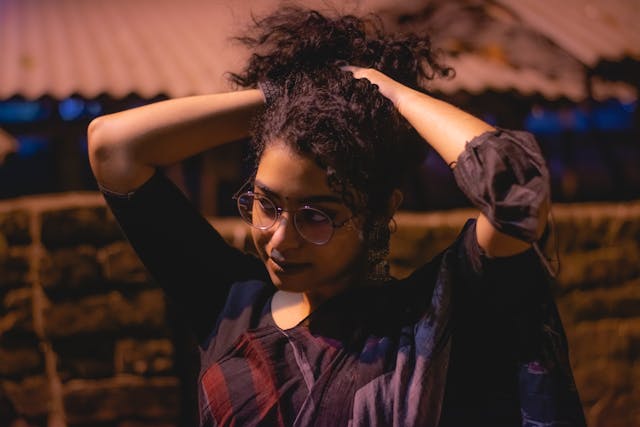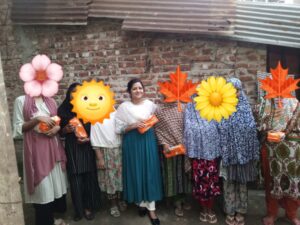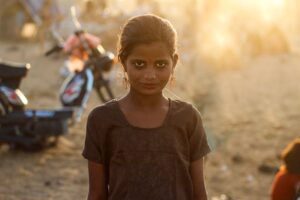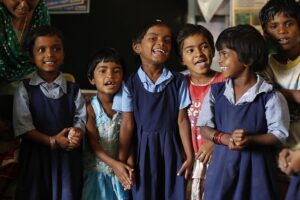Gender-based violence remains one of the most widespread human rights violations in the world today. According to UN estimates, one in three women worldwide experiences physical or sexual violence in their lifetime, with most incidents committed by intimate partners like their husbands or family members (UN Women, 2021). But behind these grim statistics are countless personal stories of positivity, like — stories of resistance, struggle, and the firm resolve to break the chains of oppression. My journey from a poverty-stricken family in Bangladesh to becoming a vocal advocate for the rights of women and minorities shows how institutional discrimination can destroy lives and how the power of education can break those barriers and lead the way forward.
I was born into a family where the struggle for survival as a woman was bigger than honor. I’ve seen firsthand how poverty and gender-based violence stand as invisible yet massive barriers to women’s empowerment, and I’ve experienced it myself. My older sister’s child marriage and post-marital abuse reflect the global trend identified by the World Health Organization—that economically vulnerable women are at a higher risk of intimate partner violence, and their means of escape are limited (WHO, 2017). This personal experience inspired me to get involved in the human rights movement. Despite countless obstacles, I am proud to have continued my education and dedicated myself to ensuring that future generations of girls do not have to live such lives and can live with honor, dignity, and equality.
The Connection Between Poverty and Gender-Based Violence
The relationship between economic deprivation and gender-based violence creates a negative cycle that perpetuates the marginalization of women for generations. Research by Heise and Kotsadam (2015) has shown that women in poverty-stricken families are at a higher risk of violence, and that same poverty prevents them from seeking help or leaving the relationship. In my family, due to a lack of education and family planning, my parents had eight children, whom they were unable to support in any way. This extreme poverty was one of the main reasons for my sister’s child marriage, a decision made under my family’s severe economic pressure.
This is a reflection of the widespread structural problems in developing countries like Bangladesh. A 2024 survey by UNFPA Bangladesh found that 70% of women in Bangladesh have experienced at least one form of intimate partner violence in their lifetime. And the poorest families experience much more domestic violence than those in wealthy families. This is “structural violence”—which, in the words of Johan Galtung (1969), is embedded within society and continuously harms marginalized populations. For women in poor families, this structural violence manifests as limited education, child marriage, financial dependence, and social isolation.
My educational life is a real reflection of those structural problems. Despite my family’s financial inability, I understood that education was the only way to break the cycle of poverty and violence. From the seventh grade, I started tutoring to pay for my own education. In our society, for girls from families like ours, education is a kind of luxury. Due to a lack of financial and family support, I failed my HSC exams twice, which proves that even with a strong mindset, institutional barriers are often difficult to overcome. But the good thing is, I put everything behind me and finished my education. Because I was determined about my studies.
Religious and Ethnic Minorities: Added Vulnerability
When gender-based violence is combined with religious and ethnic discrimination, women face double the risk. By marrying a Buddhist man, my husband and I have been, and still are, subjected to intersectional discrimination in a Muslim-majority society. This concept was explained by Kimberlé Crenshaw (1989)—where multiple forms of discrimination intersect to create experiences that cannot be understood separately. We have been harassed by neighbors, colleagues, and even relatives. Religious intolerance is increasing in South Asia—which the UN Human Rights Council (2019) has also highlighted.
Research has shown that minority women face various barriers when seeking help after experiencing violence—fear of language, culture, social exclusion, or a lack of adequate support (Sokoloff & Dupont, 2005). In the context of Bangladesh, marrying someone from another religion is legal under marriage law, but it is still socially considered a stigma. As a result, couples who are victims of harassment or discrimination are often afraid to seek help. The biggest example of this is us.
My work experience is also an example of this intersectional violence. After facing sexual harassment from the owner of a purchasing company, and religious discrimination in a garment factory, I was ultimately forced to quit my job. The International Labour Organization (ILO, 2016) has acknowledged that workplace violence against women is often linked to other forms of discrimination, creating a hostile environment. In order to survive, women often have to choose between safety and financial livelihood.
Education as Liberation and Resistance
Amidst all the obstacles, education has always been a tool of resistance for me. Paulo Freire’s (1970) “critical pedagogy” explains how education awakens people’s consciousness and gives them the power to fight against exploitative structures. Pursuing higher education through the Bangladesh Open University—on the one hand, supporting my family and taking care of my sick mother, and on the other hand, continuing my own studies—this experience reflects the “resistant mothering” described by Patricia Hill Collins (2000).
From Personal Experience to Activism
The path from victim to human rights activist can be called “biographical consequences” (McAdam, 1999)—where personal experiences of injustice lead people to get involved in collective movements. Working as a volunteer at Bidyanondo Foundation, Youth Welfare Association, and writing on this website—all of these are a practical application of my experience and education. According to Patricia Hill Collins (1986), this is an “outsider-within” position, where marginalized people also participate in knowledge production to create different perspectives.
I created this website as an alternative media—which challenges the biased news structure of the mainstream. According to Atton (2002), alternative media is important for the marginalized—documenting their experiences, sharing resources, and building solidarity.
Breaking the Vicious Cycle: Future Plans and Global Impact
I understand the international dimension of human rights work—that local struggles are actually part of a global movement. My desire to join a higher education program abroad is a reflection of this realization. Keck and Sikkink (1998) explain how local activists gain strength through international frameworks and global solidarity.
Sustainable Development Goals (SDG) Goal 5—gender equality, and Goal 16—peaceful and inclusive societies, are directly related to my experience (UN, 2015). The goal of eradicating violence against women and girls by 2030 is possible not just through policy changes, but also requires a cultural shift, which is only possible through the courage and voices of the affected people.
My perspective aligns with Amartya Sen’s (1999) concept of “development as freedom”—true development is the expansion of human capabilities and opportunities, removing the barriers of exploitation.
Conclusion: A Collective Struggle to Protect Freedom
The silence surrounding gender-based violence only perpetuates the privileged. Speaking out requires courage, and that courage often comes at a great price. My journey shows how destructive intersectional discrimination can be, and how the power of education, perseverance, and solidarity can change a life.
To break this silence, personal voices alone are not enough; there is a need for changes in laws, institutions, culture, and economic structures. The defense of freedom means—the freedom to live without violence, the freedom to choose a life partner regardless of religion or race, the freedom to build a safe education and career, the freedom to speak out against injustice.
My future goal is to get a better education and get involved in a broader human rights movement. I want being a woman or a member of a minority community to no longer be seen as a stigma or a crime. We are also human. We also want to live with our heads held high with dignity. Making this simple truth a recognized reality of society will require the collective efforts of countless people—who will bravely break the silence, tell their stories, and dedicate themselves to the long struggle for social change.
The road ahead is difficult, but we must not lose hope. Every voice, every student, every activist who stands up against obstacles, they are part of a larger movement. By protecting the freedom to live with dignity and equality, we honor those who have silently endured, and those who will breathe in a just society in the future.




